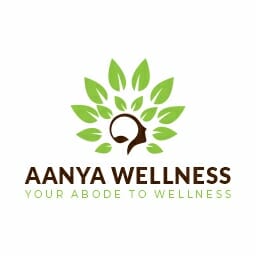Panchakarma is a therapy that helps achieving a sense of mental and physical balance in our body and mind. It is an ayurvedic practice. Panch means five! Panchakarma is a process of five therapies that help cleanse the body from toxins. Natural healing regime and Ayurveda, treats this therapy for healing the entire body and rejuvenating.
The process of Panchakarma generally starts with two sets of therapies: Oleation and Fomentation.
Oleation:
Oleation involves application of oil on the body. That manages to reach the deeper tissues, helps in carrying the medicinal ingredients to every cell of the body and loosen up toxins stuck in the cells.
Fomentation:
Oleation therapies are generally followed by fomentation therapies. Deep-rooted toxins loosened by oleation liquefy due to fomentation and help it to flush out of the body.
The five therapies of panchakarma:

1. Vamana
This process has medicine induced emesis; a person is given oleation and fomentation therapies for few days. Once the toxins gather in upper cavities of body, this induces vomiting and helps to eliminate toxins from the body tissues via natural healing. Vamana therapy is especially for kapha-dominated conditions such as obesity, asthma and hyper acidity.
2. Virechana
Elimination of toxins occurs through the evacuation of the bowels. The patient is given herbal medicines to facilitate the bowels that help in cleansing the body of toxins. Virechana therapy is for pitta-related conditions such as herpes zoster, jaundice, colitis, celiac disease etc.

3. Basti
Herbal decoctions, oils, ghee or milk are administered into the rectum. This has incredible positive effects. This therapy under natural healing is extremely effective against vata-related conditions such as arthritis, piles and constipation.
4. Nasya
This is effective in clearing and cleansing the head region by nasal drops. The head and shoulder regions are given a gentle massage and fomentation. This brings about the cleaning of the entire head region and relieves various types of headache, migraine, hair problems, sleep disorders, neurological disorders, sinusitis, chronic rhinitis and respiratory diseases.

5. Raktamokshan
This therapy is good for cleaning of blood and effective against diseases caused due to impure blood. This therapy is very useful in various skin diseases such as psoriasis, eczema, and also in local lesions such as abscesses and pigmentation.
Benefits of panchakarma:
- Cleansing the body
- Flushing out toxins
- Opening up blocked channels
- Improving digestive strength
- Speeds up metabolism
- Weight reduction
- Repairing damaged tissues
- Boosting immune system
- Relieving stress
- Relaxing the mind
We truly hope you found this article on natural healing informative. If you have any queries or suggestions then please reach out to us by dropping a message in the comment box below. Also to know more, you can always visit our website www.aanyawellness.com or book a preventive healthcare consultation session to get personalized and preventive healthcare solutions to your problems.
Is panchakarma treatment effective?
While we did not find evidence that overall quality of life was improved through the use of Panchakarma, as a program of behavior change, our preliminary results suggest that the complex intervention may be effective in assisting one’s actual and expected adherence to new and healthier behavior patterns.
What is the best time for Panchakarma?
Monsoon is considered to be the ideal time to go for Panchakarma Therapy because the body can utilize the nutrients more effectively after Panchakarma.
What is a 12 day Panchakarma?
The Panchakarma cleanse has roots in the ancient Indian alternative medicine approach known as Ayurveda. Its 12-day approach includes such actions as self-induced vomiting; enemas; “nasya,” which means eliminating toxins through the nose; and even bloodletting in an effort to “detoxify” the blood.
Can I do Panchakarma at home?
Though panchakarma is effectively done at ayurvedic center by expert and trained ayurvedic doctor, it can also be conducted at home when constraints such as time and logistics come into play.
How do you do a Panchakarma cleanse?
Drink a tea specific to your dominant dosha, steeping 1/2 to 1 teaspoon for 5 minutes, then drink. At bedtime, massage your body for 15 to 20 minutes with 8 ounces of warm organic oil (sesame oil for vata, sunflower oil for pitta, and corn oil for kapha).


